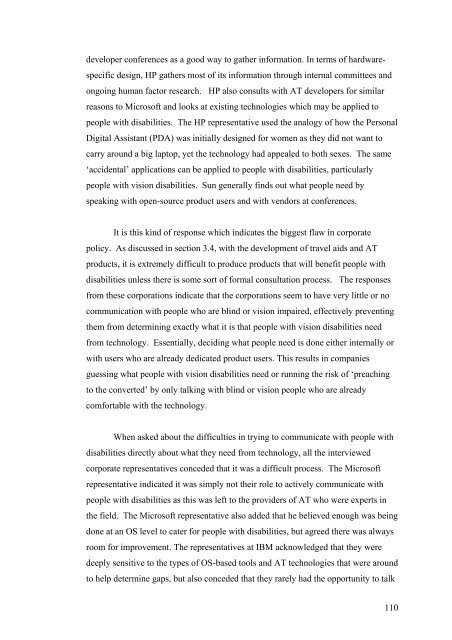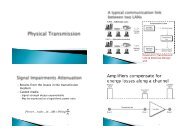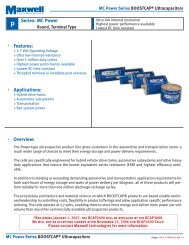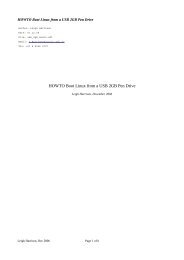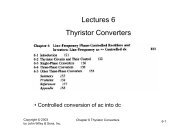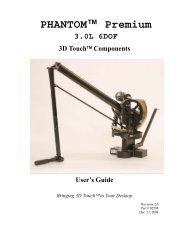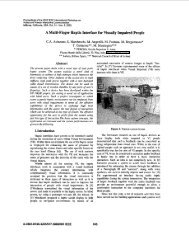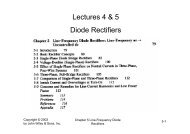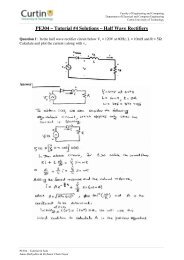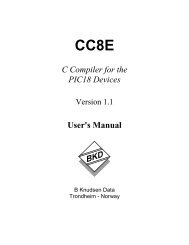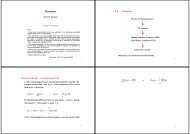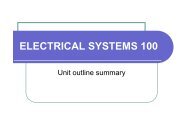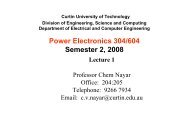2007 PhD Thesis Final Revised.pdf - Curtin University
2007 PhD Thesis Final Revised.pdf - Curtin University
2007 PhD Thesis Final Revised.pdf - Curtin University
You also want an ePaper? Increase the reach of your titles
YUMPU automatically turns print PDFs into web optimized ePapers that Google loves.
developer conferences as a good way to gather information. In terms of hardware-<br />
specific design, HP gathers most of its information through internal committees and<br />
ongoing human factor research. HP also consults with AT developers for similar<br />
reasons to Microsoft and looks at existing technologies which may be applied to<br />
people with disabilities. The HP representative used the analogy of how the Personal<br />
Digital Assistant (PDA) was initially designed for women as they did not want to<br />
carry around a big laptop, yet the technology had appealed to both sexes. The same<br />
‘accidental’ applications can be applied to people with disabilities, particularly<br />
people with vision disabilities. Sun generally finds out what people need by<br />
speaking with open-source product users and with vendors at conferences.<br />
It is this kind of response which indicates the biggest flaw in corporate<br />
policy. As discussed in section 3.4, with the development of travel aids and AT<br />
products, it is extremely difficult to produce products that will benefit people with<br />
disabilities unless there is some sort of formal consultation process. The responses<br />
from these corporations indicate that the corporations seem to have very little or no<br />
communication with people who are blind or vision impaired, effectively preventing<br />
them from determining exactly what it is that people with vision disabilities need<br />
from technology. Essentially, deciding what people need is done either internally or<br />
with users who are already dedicated product users. This results in companies<br />
guessing what people with vision disabilities need or running the risk of ‘preaching<br />
to the converted’ by only talking with blind or vision people who are already<br />
comfortable with the technology.<br />
When asked about the difficulties in trying to communicate with people with<br />
disabilities directly about what they need from technology, all the interviewed<br />
corporate representatives conceded that it was a difficult process. The Microsoft<br />
representative indicated it was simply not their role to actively communicate with<br />
people with disabilities as this was left to the providers of AT who were experts in<br />
the field. The Microsoft representative also added that he believed enough was being<br />
done at an OS level to cater for people with disabilities, but agreed there was always<br />
room for improvement. The representatives at IBM acknowledged that they were<br />
deeply sensitive to the types of OS-based tools and AT technologies that were around<br />
to help determine gaps, but also conceded that they rarely had the opportunity to talk<br />
110


